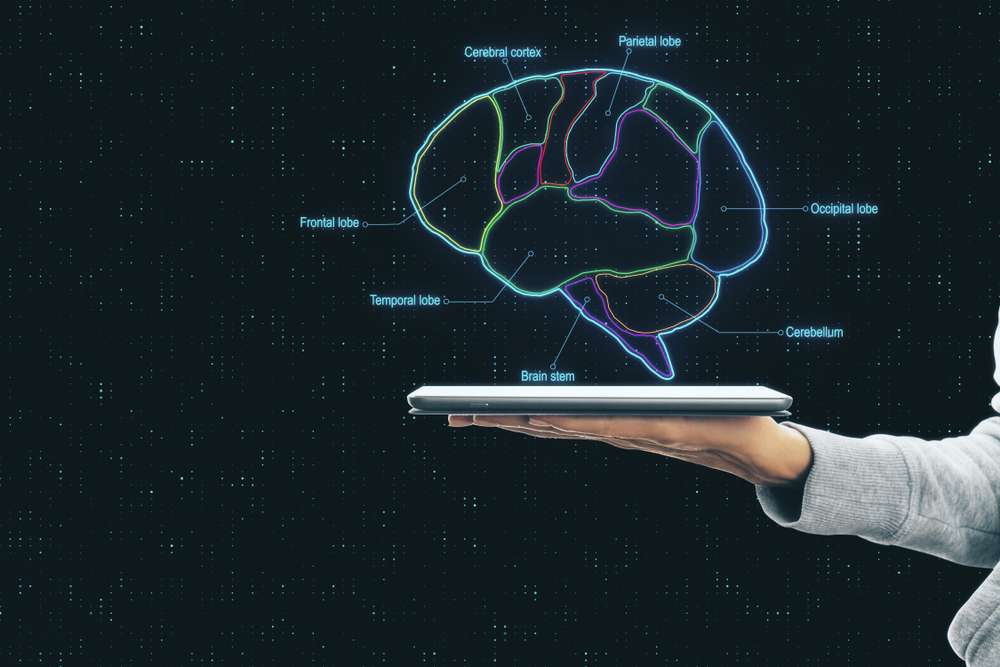
Understanding the Concept of Self-directed Learning
Self-directed learning refers to a method of education where the learners are the main drivers of their own learning process. They identify their learning goals, choose and implement appropriate learning strategies, and evaluate their own progress. This technique contrasts with more traditional, guided learning structures where the teacher or mentor leads the students through a predetermined curriculum. Self-directed learning is centered on the premise that education should empower learners to take control, fostering independent thinking, creativity, and critical problem-solving skills.
There are three main components involved in self-directed learning which are self-management, self-monitoring, and self-modification. Self-management refers to the ability to plan and organise one’s own learning activities. This might involve identifying what one needs to learn, finding and selecting the right learning resources, managing time effectively, and staying motivated throughout the learning process.
Secondly, self-monitoring is about continuously checking on one’s own learning progress. This means constantly assessing whether one is making progress towards the set learning goals, and whether the chosen learning strategies are effective or not. The ability to critically assess one’s own work is a vital skill for lifelong learning.
Lastly, self-modification is related to adjusting one’s own learning strategies based on the feedback from the self-monitoring phase. If a certain strategy is not working, then one needs to be flexible enough to try something different and adjust the learning approach accordingly.
Moreover, self-directed learning recognizes the need for individual difference. Each learner has their own style of learning, pace, interests, and strengths, which are all taken into account in designing and implementing the learning process. Therefore, self-directed learning, by its very nature, supports personalized or differentiated learning.
In the end, self-directed learning is all about taking ownership of one’s learning and being an active participant rather than a passive recipient in the learning process. The goal is not just to accumulate knowledge, but to cultivate skills and attitudes that will facilitate lifelong learning. Such skills include self-discipline, resilience, curiosity, and a love for learning – traits that are increasingly important in our rapidly changing world.
In the subsequent chapters, we will delve into further details on how you can incorporate this empowering approach to learning in your everyday routine, what tools and resources can aid this process, and how to overcome common challenges in self-directed learning.

Importance of Self-directed Learning in the Modern World
In our rapidly evolving world, the ability to direct one’s own learning is becoming increasingly important. This is due to several interconnected factors: technological advancement, knowledge expansion, and the shifting landscape of work and life.
Firstly, the growth in technology is exponential and touches every field of work and study. In the past, it might have been possible to acquire a set of skills in your 20s and then use them throughout your career. In contrast, today’s technologies render skills obsolete within a few years. As a result, lifelong learning has become a necessity. One must continually learn new software, new devices, and new methods. In this environment, self-directed learning is a crucial survival skill.
Then comes the explosion of knowledge. Humanity’s knowledge in every field, from science to history, is expanding. The internet puts an unprecedented amount of information at our fingertips. A traditional classroom-based model falls short in the face of this knowledge deluge. It is not feasible to learn everything from an institution or a teacher. One has to take the reins of learning in their own hands. Self-directed learners therefore have an edge. They can browse, evaluate, and assimilate knowledge independently without depending on an external entity.
Finally, our lifestyle and work culture have changed. Telecommuting, freelancing, gig economy, digital nomadism – these are becoming more and more common. These arrangements offer flexibility but also require people to be disciplined and proactive. For instance, when you are your own boss, nobody is going to tell you what new skills you should acquire. You need to figure that out yourself. Self-directed learning is a cornerstone in this kind of self-managed work environment.
However, it’s not just about work. As our lives become busier, formal educational setups might not be feasible for everyone. Maybe you’re a working adult who wants to learn a new skill or subject. Perhaps you’re a young learner passionate about a niche area not covered at your school. Self-directed learning allows you to take charge, setting your own goals, pace, and methods.
In conclusion, no matter which way you look at it, being a self-directed learner is key to thriving in the modern world. It allows for adaptive skill acquisition, an efficient response to information overload, and proactive personal and professional development. Investing in learning how to learn, curating our own education and development, is arguably the most important thing we can do in our current age.

The Science of Self-directed Learning: A Brief Overview
The science of self-directed learning is rooted in the principles of cognitive psychology and educational theory. It upholds the idea that learning is most effective when individuals have control over their learning process. This way of acquiring knowledge and skills is based on several fundamental concepts.
Self-directed learning starts with metacognition—or, put simply, thinking about thinking. This involves awareness and understanding of one’s own thought processes. Metacognition is vital because it allows the learner to recognize what they know and where there are gaps in their knowledge. They can then take proactive steps to fill these gaps.
Another concept integral to self-directed learning is intrinsic motivation. Intrinsic motivation is the inner drive to learn something out of curiosity, interest, or personal value, rather than external rewards or punishments. Research suggests that learning driven by intrinsic motivation tends to be more sustainable and impactful than learning driven by external factors.
Transfer of learning is also a critical element of self-directed learning. Essentially, transfer of learning is the ability to apply knowledge or skills gained in one context to another context. This not only involves recognizing similarities and differences between different situations but also understanding how to adapt one’s approaches accordingly.
Self-regulated learning, intrinsic motivation, and transfer of learning collectively form the basis of self-directed learning. However, it’s also important to remember that self-directed learning isn’t a one-size-fits-all approach. It’s about tailoring learning strategies to an individual’s unique needs and preferences, leveraging strengths, and addressing weaknesses. Thus, cultivating a growth mindset – the belief that intelligence and abilities can be developed with effort, practice, and persistence – is another foundational element of this learning style.
The science of self-directed learning also acknowledges the importance of self-efficacy, which is an individual’s belief in their own abilities to achieve goals or tasks. When learners have high self-efficacy, they’re more likely to take on challenging tasks and persist in the face of difficulties.
Finally, self-directed learning also rests on the principle of autonomy, which supports the learner’s freedom to control their own learning process—to determine what, how, when, and where they learn. Autonomy doesn’t necessarily mean isolating oneself, but it does involve taking responsibility for one’s own learning.
In summary, the science of self-directed learning is about fostering independence, curiosity, and resilience in learners. It encourages individuals to be proactive, reflective, and strategic, helping them not just to acquire knowledge and skills, but also to understand how they learn best, which can ultimately enhance their learning capacity and performance in multiple areas of life.

How to Incorporate Self-directed Learning into Your Daily Routine
The incorporation of self-directed learning into your daily routine doesn’t have to be an arduous task, but it does require a firm commitment and a willingness to change. By following the steps outlined below, you should be able to successfully establish a routine that allows you to learn autonomously.
Step 1: Identify Your Learning Objectives
Before beginning your journey of self-directed learning, you need to define what exactly you wish to learn. The learning objective serves as your compass, guiding your study process and helping you stay focused and on track.
Step 2: Plan Your Learning Schedule
Once you are clear about your objectives, the next step is to establish a schedule. Remember, consistency is key when it comes to learning. You will need to set aside a specific amount of time every day dedicated to studying. This could be an hour in the morning before work or in the evening before bed. Consider your personal and career commitments, find a time that suits you best, and make a conscious effort to stick to that time.
Step 3: Assemble Your Learning Resources
The internet is a treasure trove of knowledge, with countless resources available to you at the touch of a button. Depending on the objective, you can choose online courses, eBooks, videos, research papers, or even podcasts to guide your learning.
Step 4: Create a Conducive Learning Environment
Your learning environment can significantly impact your growth. Ensure you have a quiet, well-lit space where you can focus on your studies without any disturbances. This could be a study or a home office, or even a corner of your living room.
Step 5: Apply What You Learn
Self-directed learning is not just about acquiring knowledge but also about applying it. Finding practical ways to use the knowledge or skills learned will not only give more purpose to your studies but will also help consolidate your learning.
Step 6: Reflect and Evaluate Your Progress
Frequent reflection and evaluation of your progress are crucial for self-improvement. This exercise forces you to revisit your weaknesses and strengths, giving you the chance to tweak your learning process as necessary.
Step 7: Don’t neglect your physical health
While embarking on this enlightening journey, remember that a healthy mind resides in a healthy body. Incorporate regular exercise into your routine and make sure to eat a balanced diet.
Lastly, but importantly, remember that self-directed learning is a marathon, not a sprint. It’s okay to make mistakes and have days where you are not as productive, what’s essential is to remain committed and keep on going. Rome wasn’t built in a day, after all!

Resources and Tools for Self-directed Learning
Cultivating a sustainable habit of self-directed learning requires the right resources and tools. While the readiest tool at your disposal is undoubtedly your own curiosity and drive to learn, there are several other aids that can enhance your experience significantly.
Online Learning Platforms: In the digital age, numerous online learning platforms have come to the fore, providing courses that range from quantum physics to digital marketing. Platforms like Coursera, Khan Academy, and Udemy offer self-paced courses that you can undertake at your leisure. Likewise, for more specialized professional learning, websites like LinkedIn Learning or Skillshare can be tremendously helpful.
Academic Institutions & Libraries: Many universities and institutes like MIT, Yale, and Stanford offer free open courseware and lectures, allowing you to learn from top educators across the globe. Public and university libraries provide free access to a wealth of knowledge – books, academic journals, and databases.
Podcasts & TED Talks: Podcasts have become an essential tool in self-directed learning. They offer the ability to learn on the go—with episodes dedicated to varied topics, from history to future technology. TED Talks are a great avenue to explore innovative ideas and gain insight from global leaders across various disciplines.
Apps & Software: Today, there are numerous apps designed to support self-learners. Duolingo, for instance, is excellent for language learning, Coursera and edX apps provide on-the-go access to their courses, and apps like Quizlet are fantastic for learning through flashcards. Software like Rosetta Stone, Scratch (for coding), and Yousician (for learning musical instruments) are also worth exploring for specific skill sets.
Documentaries & Online Videos: Documentaries provide a whole new perspective on various topics, making learning engaging and enjoyable. Similarly, YouTube has become a valuable resource for self-directed learners, providing free videos on a broad range of subjects, including dedicated channels like Vsauce, TedEd, and CrashCourse.
Books & eBooks: From time immemorial, books have been the most crucial resource for any learner. Today, with the rise of eBooks and audiobooks, this has become more convenient than ever. Websites like Project Gutenberg give access to more than 50,000 free eBooks, and apps like Audible offer an extensive gallery of audiobooks.
Webinars & Workshops: Keep an eye out for free webinars and workshops on topics of interest. These can offer immense value, with insights from industry professionals and often interactive sessions that add a different dimension to your learning.
Learning Communities: Websites like Stack Overflow for programmers, or art forums such as ConceptArt.org, are great platforms to communicate with other learners and experts, share your work, and get feedback.
Remember, the key to effective self-directed learning is not just the resources you avail, but how you strategize your learning process, making sure to align it with your goals in a way that it becomes an enjoyable journey rather than a task. Choose the right tools and resources that suit your learning style and begin your voyage into the fascinating world of self-directed learning.

Challenges and Solutions in Self-directed Learning
Self-directed learning is an incredibly empowering and transformative approach to lifelong learning. Despite its prospects, however, it is not without its challenges. In this chapter, we will explore the most common obstacles encountered in self-directed learning and offer feasible solutions to overcome them.
The first challenge is the lack of structure found in traditional learning systems. In self-directed learning, the learner is free to set their agenda and learning goals, which can be quite daunting. The absence of a set syllabus or a proper guideline may create feelings of messiness and confusion. The solution? Establish a personal learning plan. Define your learning objectives, devise a schedule, choose your resources, and set a timeline to achieve your goals. Having a clear plan provides a roadmap to follow, ensuring learners to stay focused and organized.
Next, keeping motivation alive can be quite challenging. Learning independently requires a strong internal drive. You have to be your cheerleader. There may be moments when you feel stuck, dull, or simply unmotivated. During these times, it’s essential to remember “why” you initiated this process. Reconnecting with your purposes could reignite your passion. Also, setting small, achievable goals throughout your learning journey, celebrating successes, and maintaining a healthy learning-life balance can boost motivation.
Thirdly, isolation is another common challenge. The learning process can often feel lonely without the communal aspect of traditional classrooms, leading many to abandon their self-study route. To solve this, online platforms can play a pivotal role. Join online study groups, discussion forums, or communities of learners on the same journey. These can provide camaraderie, assistance, and a sense of belonging.
Doubt is another obstacle. When you’re self-teaching, it’s natural to question your abilities or progress at times. A lack of confidence can hinder your learning process and discourage you from pushing forward. To overcome this, engage in self-assessment. Regularly evaluating and documenting your own progress can boost your confidence. Feedback from peers or mentors can also help to reassure you about your ability and progress.
Finally, there can be a challenge in accessing quality learning resources. Without access to a proper library or academic resources, finding credible information and good learning materials can be hard. The internet, however, is an abundant source of online courses, academic journals, instructional videos, and e-books. Platforms like Khan Academy, Coursera, edX, and Google Scholar offer a wide range of free and premium educational resources.
In conclusion, self-directed learning, while empowering, does present certain challenges. But with motivation, a well-constructed plan, a supportive community, regular self-assessment, and quality resources, these challenges can be effectively navigated. Remember that the journey of self-directed learning is a marathon, not a sprint. Practice resilience, patience, and keep the thirst for knowledge alive, and success will undoubtedly be yours. End of chapter 6.

Success Stories: Real-life Examples of Self-directed Learners
The power and effectiveness of self-directed learning can be best exemplified through real-life success stories. These individuals did not just wait to learn from traditional sources but took it upon themselves to acquire the necessary knowledge and skills, and they certainly reaped the rewards.
Let’s start with the story of Thomas Edison, one of history’s greatest inventors. Edison was expelled from school after three months because of his restlessness, and his mother decided to educate him at home. Edison’s curiosity pushed him to conduct experiments and learn by himself. Eventually, he invented the electric light bulb, phonograph, and many other remarkable things, all without a formal education but with a strong self-directed learning drive.
Barbara Oakley, now a seasoned professor in Engineering, was previously an army captain, Russian translator, and radio operator. She, too, failed in math and science in school, yet, when she started to learn math as an adult, things began to change. She adopted a self-learning approach and dove deep into mathematical concepts herself. Eventually, she successfully transitioned into a career in engineering and then academia. Her dedication to self-directed learning led her to create the world’s most enrolled course, ‘Learning How to Learn’, helping millions learn effectively.
The modern world blessed us with Elon Musk, an unparalleled visionary and maverick entrepreneur. As a child, Musk was an avid reader and constantly quested for knowledge. The co-founder of PayPal, Tesla Motors, and SpaceX, he is known for his broad knowledge spectrum. When asked how he learned to build rockets, he candidly replied, “I read books.” This epitomizes the power of self-directed learning.
Lastly, we have Steve Jobs, whose story is rather well-known but worth mentioning. Even though Jobs did quit college, he didn’t stop learning. He audited classes that intrigued him, including calligraphy, which he famously attributes the inclusion of beautiful typography in Apple computers. His self-directed learning approach undoubtedly gave the tech world many game-changing innovations.
These examples are to inspire and remind us that learning can happen beyond traditional classroom boundaries. You too can harness the potential of self-directed learning, regardless of age, background, or circumstances. Remember, it’s the curiosity and undying thirst for knowledge that drives this kind of learning. As exemplified by these successful individuals, you control your learning journey, and this empowerment can lead you to heights unknown. Whether it’s a new language, skill, or an interesting subject, you have the freedom to choose, and in this process, you don’t just learn about that subject, you learn about yourself.


